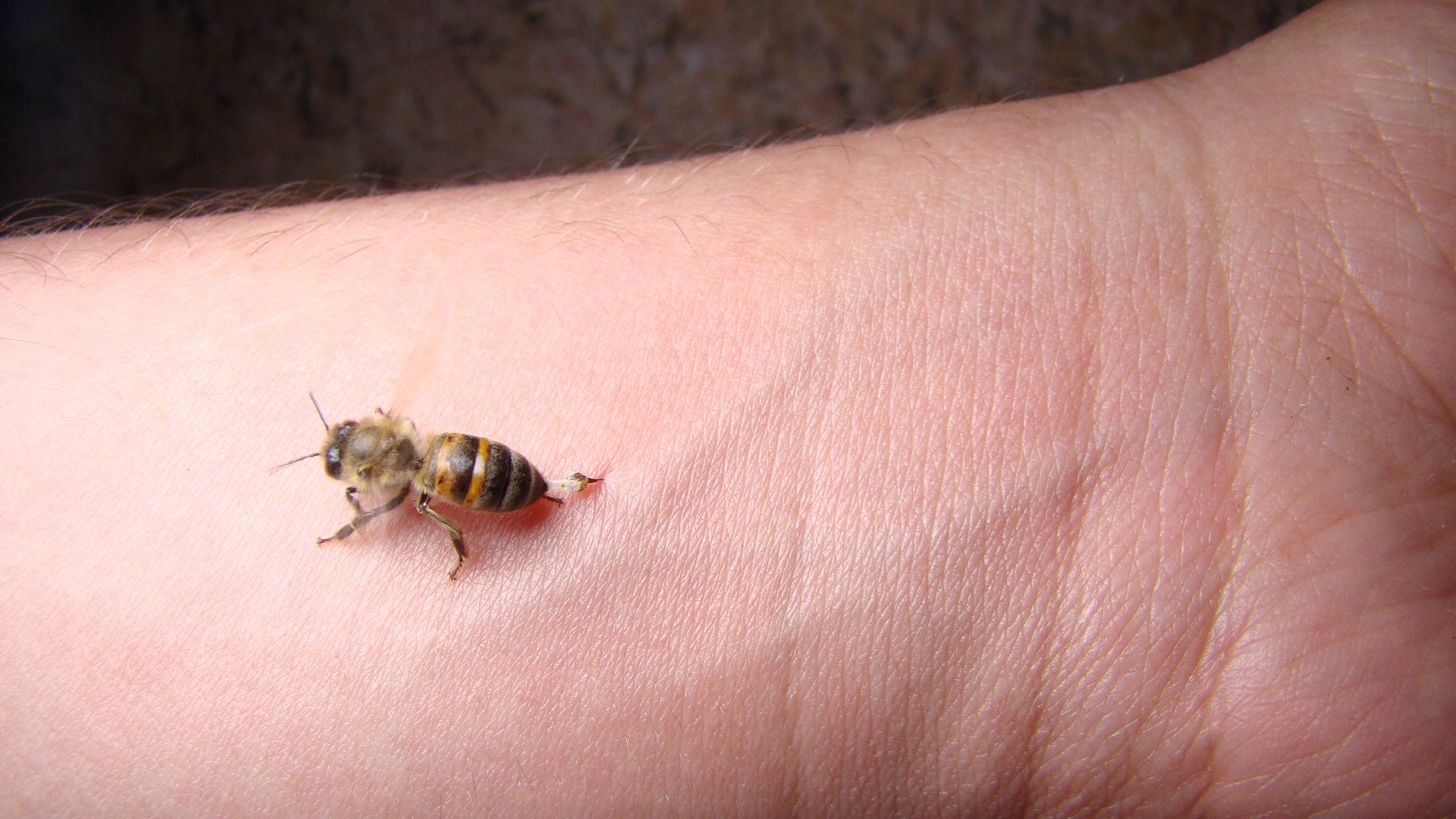Every family has a secret way of treating a bee or wasp sting; some traditions go back generations and may not make logical sense. So, what is the most effective way to handle a sting? There are some things that can be done immediately following a sting that will help. Instead of relying on a home remedy that may or may not have a medical or scientific basis, it is a good idea to have a plan in place just in case. Taking steps immediately following a sting can minimize swelling, redness, itching, and discomfort. Additionally, these steps allow immediate assessment of a severe reaction where a quick response can save a life.
Most people, when stung, won't have a life-threatening response to a bee or wasp sting. However, stings will cause a local reaction, which can be uncomfortable and cause pain, swelling, and redness at the sting site. Multiple stings, even to someone not allergic, can cause serious physical responses. Use discretion, but if someone is attacked by multiple bees or wasps and is stung, they should seek medical attention.
First, Determine If the Reaction Is Generalized or Local
A generalized allergic reaction is one that can be life-threatening, and signs to watch for are:
- Difficulty breathing
- Loss of consciousness
- Tongue and lip swelling
- Hives
- Dizziness or tingling sensations
Any individual showing these symptoms after a sting should go to the emergency medical center immediately. Anyone with known generalized reactions to stings should go directly to a professional medical facility. Most people with known allergic reactions to stings have an epinephrine injector (EpiPen) on them to administer in these situations. If you are with someone who is stung and needs epinephrine injected, do the right thing and help them – you may save their life!
Steps Following A Localized Sting Reaction
A local bee sting reaction can be followed by simple steps that can be taken at home.
- First and foremost, remove the stinger. Honeybees have barbed stingers left in the skin and must be removed as quickly as possible. The bees have a venom sack on their stingers, which will continue to pump venom into the skin as long as it stays in place. The sooner you can get the stinger out, the better. Some objects that can be used to remove the stinger are a credit card or butter knife scraped across the skin. Using tweezers or trying to squeeze the stinger out can release more venom.
- Nest, use a cool compress on the sting site. The coolness alleviates the pain and can help with swelling, which reduces itching. It is okay to use ice, but don't leave it on the skin and cause other skin irritation. It is ok to use an over-the counter topical or oral antihistamine to alleviate itching.
- Elevate the Sting Site When Possible – it is well known that elevating an area of the body can reduce swelling, and bee stings are no different. Not in all situations does it make sense to elevate the body where the sting occurred, but if it is an arm or leg, this can easily be done on a propped-up pillow. Swelling from stings can be alarming and look infected. It is important to know that stings rarely get infected, and swelling most often goes down in a few hours but can take a day. If there are any concerns, please seek professional medical help.

Get help with your beehive or bee swarm removal! Call Today 760-224-3040 Or 951-265-8292!
Preventing Bee Stings
Beekeepers work with bees every day, but you never hear about them being stung repeatedly. It is safe to say that all beekeepers have been stung in their lives. However, beekeepers know it is part of their job to be aware of bee behavior and common triggers for bees to attack, and they also take measures to minimize sting risk. There are a few tips to reduce the likelihood of getting stung, although it is impossible to remove the chance entirely.
- Stay away from wearing bright colors when going somewhere where there will be bee and wasp activity, like the park. Avoid perfumes and body lotions with strong scents.
- Do not tamper with bees or a beehive. If you are at a park or the beach and encounter a beehive, do not disturb it. Bees are not normally aggressive unless they feel they, their queen or their home is threatened. So, if you leave bees alone, they will usually repeat the favor. Wasps are more aggressive but not fast, so walk away quickly if you accidentally come face-to-face with bees or wasps.
- Never attempt to remove a beehive or shoo a swarm. There are times when a bee swarm or beehive is in an inconvenient spot at an inconvenient time. Although finding a quick fix in these situations may be tempting, using a professional live bee removal service is critical.
D-Tek is a full-service live bee removal company. We use only humane tactics to remove bees while keeping people and pets safe.
